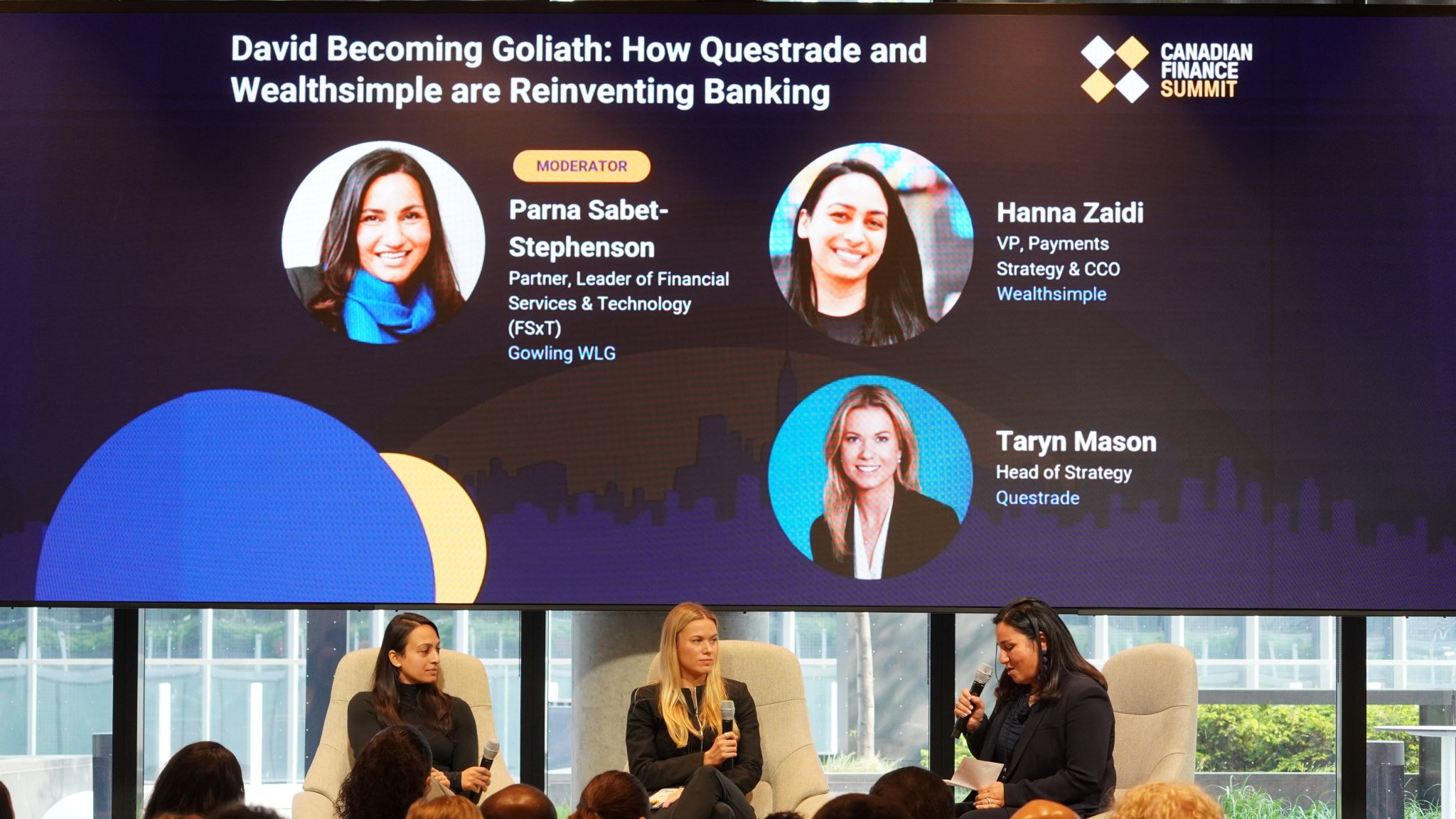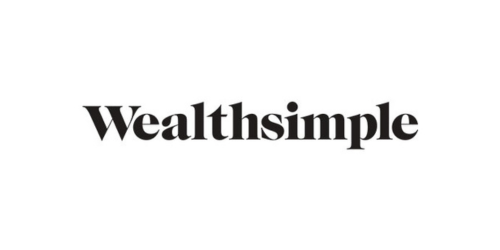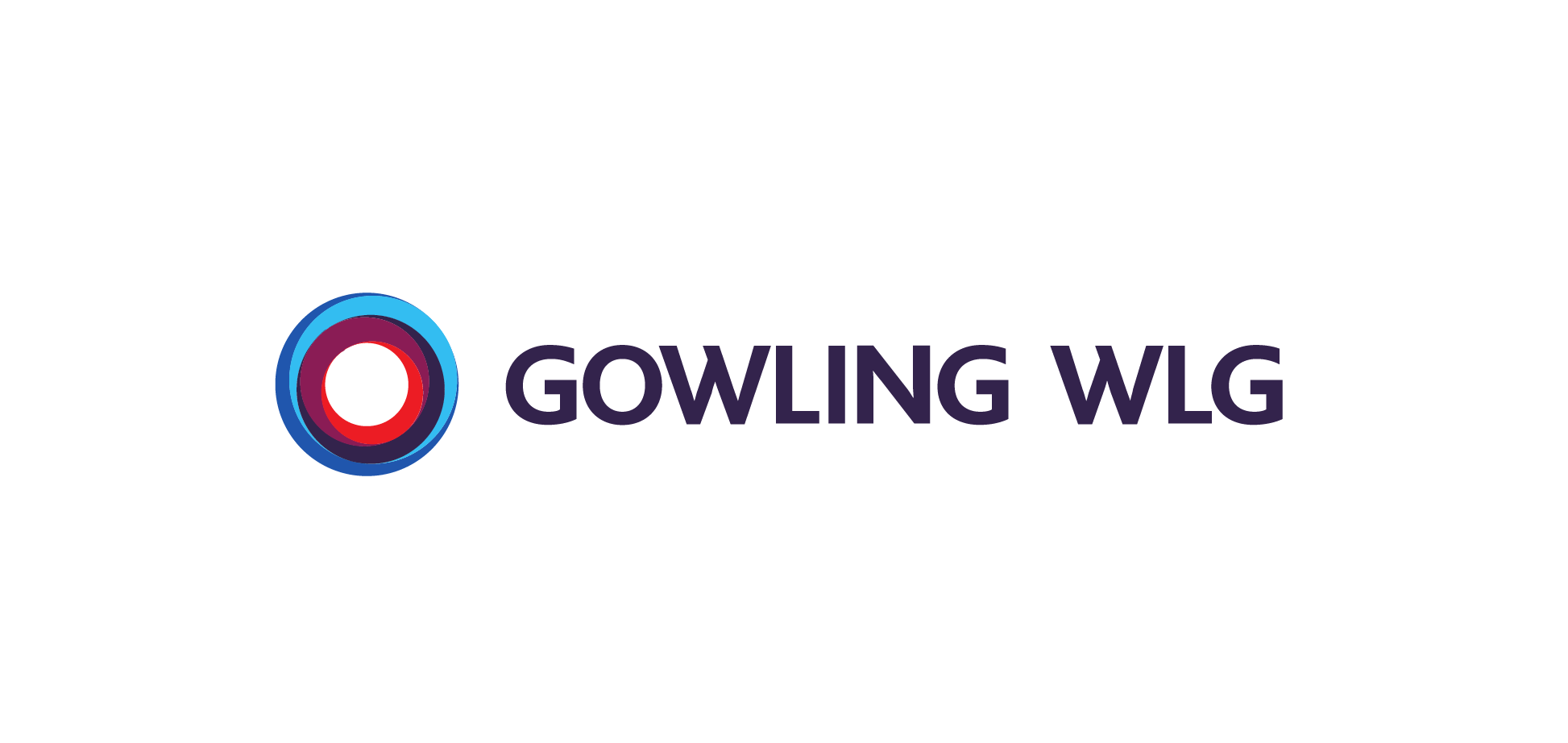David Becoming Goliath: How Questrade and Wealthsimple are Reinventing Banking
Abstract: At the Canadian Lenders Summit, Parna Sabet-Stephenson of Gowling WLG hosted a candid and forward-looking conversation with Taryn Mason (Questrade) and Hanna Zaidi (Wealthsimple) on the evolution of challenger banks in Canada. Far from simply disrupting the status quo, both leaders described how their firms are redefining what Canadians should expect from financial services—offering trust-driven, high-value, tech-forward experiences that prioritize wealth creation over fee extraction. From Questrade’s path to securing a full banking license to Wealthsimple’s strategy of direct infrastructure access without becoming a traditional bank, the panel explored the importance of intentional product design, regulatory grit, and reimagining banking as something intelligent, automated, and user-controlled. As Zaidi put it: “Banking shouldn’t be something you do—it should just happen.”


Parna Sabet-Stephenson: While the term “challenger bank” gets used a lot, today’s conversation is really about something broader—how fintechs are carving out their own path, not just challenging incumbents.
Taryn Mason: Thanks, Parna. I’m Head of Strategy at Questrade. From a pure business perspective, the total addressable market in banking is at least 10 times larger than direct investing. Entering this space gives us access to new profit pools while staying close to our core mission.
Questrade has been around for 26 years—making it one of Canada’s original fintechs. That history builds trust, which is critical when you’re asking people to move their core banking relationships. Trust, according to studies like J.D. Power, is the #1 driver of customer satisfaction in banking.
We also have a strong customer base—financially savvy individuals who are already open to non-bank options. They skew younger, have above-average income and net worth, and are intentional about their financial choices. That creates a great launchpad for us to enter banking with confidence and purpose.
But what excites me most is the opportunity to challenge long-standing assumptions. Despite how competitive banking appears, many of its structures are rigid and outdated. There’s real white space for innovation.
Hanna Zaidi: I’ll be blunt—we’re not a bank, and we don’t plan to become one. We believe we’re building something better.
Over the years, our clients have trusted us with their investments, crypto, and savings. Many told us: “If you offered a checking account, I could finally break up with my bank.” So we built a product aligned with our mission—low-cost, high-value wealth creation.
We launched a high-interest account with core banking features, and we led with trust. One innovative example is our CDIC-stacking coverage. Since we partner with multiple CDIC-member banks, clients can access up to $1 million in insured coverage—something traditional banks don’t offer.
We also introduced “investable rewards.” Every time you use your card, you can opt to invest your cashback into your favorite stock, a crypto asset, or just take the cash. One of my favorite stories is about a 21-year-old client who used this to build her first Tesla share—eventually opening a managed portfolio to save for her first home.
Parna Sabet-Stephenson: That’s a powerful story. Let’s talk product design. What makes your approach to financial product development different—and what does that say about where traditional banks are vulnerable?
Hanna Zaidi: It’s about intention. Most traditional products extract value: monthly fees, minimum balances, transaction charges, and low interest rates. We flipped the model. Our checking account has no fees, no minimums, and some of the highest interest rates in the market—plus rewards that build wealth.
Banks, even if they wanted to change, face channel conflict and legacy systems. They’re locked into physical branches and outdated tech. We’re not. That gives us an operational edge to offer better value—and still be profitable.
What’s frustrating is how some banks respond. One recently doubled its fees for transferring accounts out. Rather than competing for your business, they create disincentives to leave. Canadians are tired of this. One in five Canadians under 40 have a Wealthsimple account. Thirty percent of first-time homebuyer savings accounts were opened with us. People are choosing better.
Taryn Mason: Absolutely. And to build on that, at Questrade, we’re designing from a deeper understanding of customer psychology. We recently conducted an attitudinal study—not just demographics, but values and motivations.
What we found is that Canadians want products designed around how they actually manage money—with partners, family, even friends. Most products today are built for individuals and fail to support collaborative money management. Things like joint accounts, shared transaction data, and smarter investment triggers are still stuck in the past.
We also see friction points: you can’t invest directly from a checking account, auto-deposit tools don’t adjust to real spending, and most advice is retroactive. The future lies in proactive, integrated solutions that address spending, saving, and investing all at once.
Parna Sabet-Stephenson: Let’s talk strategy. Taryn, Questrade just got its banking license. What does that journey look like?
Taryn Mason: Yes—we applied for our Schedule I banking license back in 2019. We received our letter of patent from the Minister of Finance this past March and are now moving toward our commencement date.
We’re actively hiring, bringing in leaders from both traditional finance and consumer tech. Our product roadmap is locked in. When launch day arrives, we’ll be rolling out a suite of offerings focused on learning from our current users and scaling based on what they value most.
Parna Sabet-Stephenson: Hanna, your model is very different. Can you talk about what it’s taken to go direct?
Hanna Zaidi: We’ve spent the last few years securing direct access to Canada’s core financial infrastructure—something that’s traditionally been gated for non-banks. We were the first operating member and securities dealer to join Payments Canada. We became a direct participant in the e-Transfer network. We got a Visa issuing license. And yes—we even secured a settlement account at the Bank of Canada, though we can’t use it until the real-time rail exists.
Why do all this? Because we believe fintechs should own their infrastructure to control the experience and economics. When you’re dependent on competitors for access, it limits your ability to innovate.
This hasn’t been easy. Canada’s system is built to protect institutions, not necessarily innovators. But we pushed through, and we’re building something that meets the full needs of our clients—and reflects the future we want to see.
Parna Sabet-Stephenson: Looking ahead—what does the future of banking look like?
Taryn Mason: Banking will become more integrated, more configurable, and faster-moving. Think: tools that help you spend, save, and invest simultaneously. Think: AI-enhanced automation that still gives you the option to speak to a human when it matters—like when you’re getting a mortgage.
We’re entering a high-velocity era of finance. With easier money movement, customers can shift parts of their financial life more easily—and providers need to keep up. The winners will be those who can offer relevance, simplicity, and speed.
Hanna Zaidi: Banking shouldn’t be something you do—it should just happen. Your bills paid, your investments topped up, subscriptions cancelled—intelligently and in real time. I call it Intent-Driven Finance. You set the rules. The system does the rest.
Gone are the days of waiting in line at a branch or wrestling with spreadsheets. Every transaction should build your wealth. And everything you need should be available from the palm of your hand—or maybe the bank comes to you.
We’re excited to show what that looks like. Stay tuned for our June 11 event.
Parna Sabet-Stephenson: Brilliant. It’s clear that the future of banking—whatever we end up calling it—is bright, flexible, and full of real options. Thank you both for sharing your insights.
Here are 10 key insight bullets from the panel discussion:
-
Fintechs Are Not Just Challengers—They’re Redefining Banking
The term “challenger bank” doesn’t capture the full picture. Companies like Questrade and Wealthsimple are building parallel systems that challenge traditional banking structures by offering fundamentally different value propositions. -
Questrade’s Banking Expansion Is Strategy-Driven
With a total addressable market 10x larger than direct investing, Questrade sees banking as a natural extension to capture new profit pools while staying true to its mission of empowering financially savvy Canadians. -
Trust Remains the Key Driver of Customer Switching Behavior
Both panelists emphasized that trust—not just features or pricing—is what convinces consumers to move their core financial relationships. Longstanding fintechs can use their brand equity to win in banking. -
Wealthsimple’s Model Avoids Becoming a Traditional Bank
Rather than applying for a banking license, Wealthsimple is leveraging financial infrastructure partnerships to offer high-yield, no-fee accounts and innovative features like CDIC-stacking for $1M insured coverage. -
Fintech Product Design Focuses on Wealth Creation, Not Value Extraction
Traditional banks monetize through fees and low interest; new fintech offerings flip this model by eliminating friction and aligning incentives around savings, investment, and financial wellness. -
Collaborative Finance Is a Key Missed Opportunity in Legacy Banking
Questrade’s research reveals that Canadians increasingly manage money in collaborative ways (e.g., with partners or family), yet most products are designed for individual use. Fintechs see this as a white space. -
Owning Infrastructure Unlocks Innovation
Wealthsimple spent years securing direct access to Canada’s financial system—from e-Transfers to a Bank of Canada settlement account—arguing that fintechs must control infrastructure to truly innovate. -
The Regulatory Journey Is Long, But Strategic
Questrade applied for its Schedule I banking license in 2019 and just received its letter of patent, showing that even well-capitalized fintechs face multi-year pathways to regulatory approval in Canada. -
The Future Is Intent-Driven, Automated Finance
Banking will become invisible—customers set preferences, and the system executes automatically: paying bills, investing cash, canceling subscriptions. Real-time, AI-enhanced financial automation will become the norm. -
Speed, Relevance, and Configurability Will Define the Winners
In a world where customers can shift money effortlessly, the fintechs and banks that deliver value fast, in context, and across the full financial journey will lead the next generation of financial services.
Sign up for the CLA Finance Summit Series






